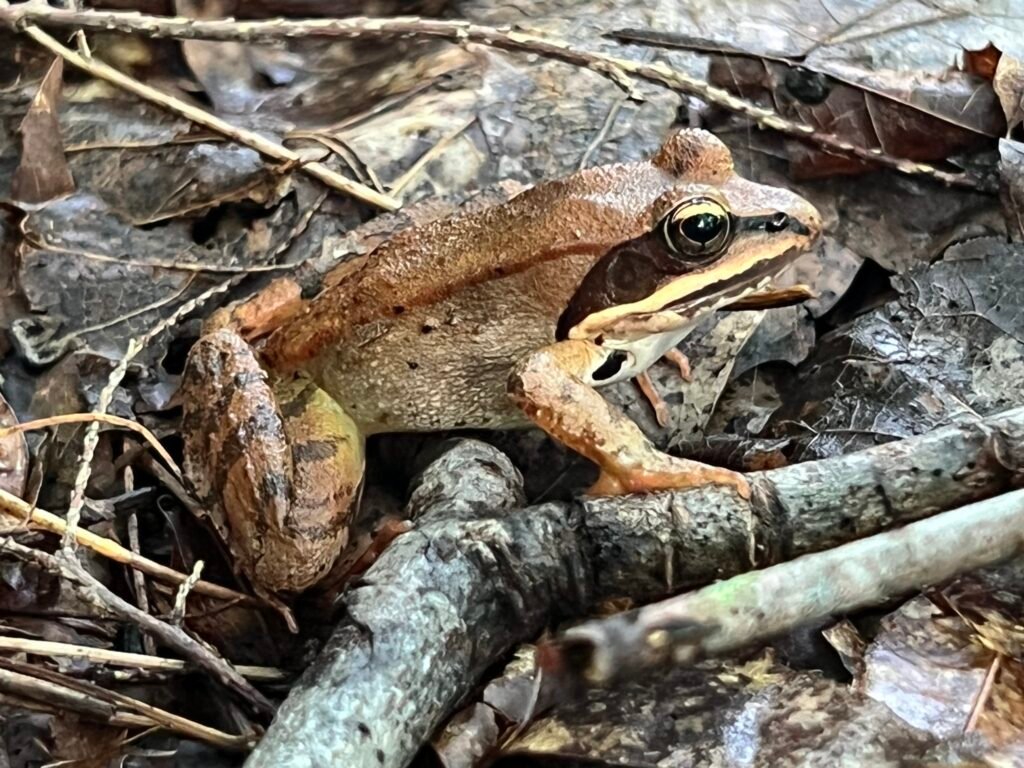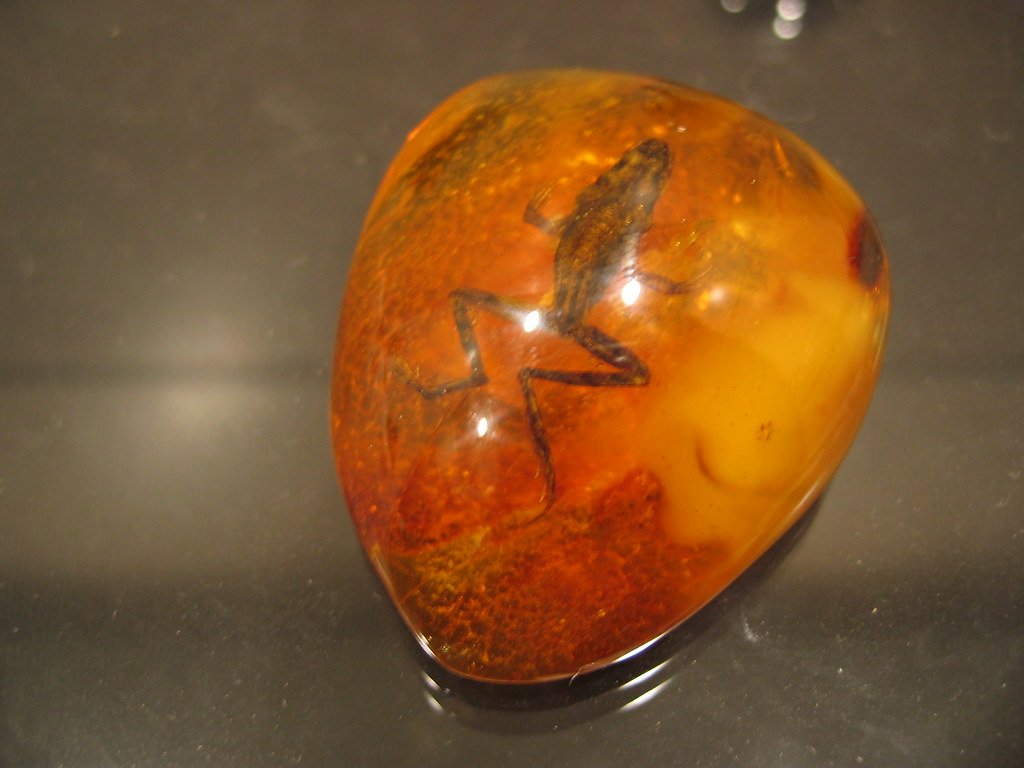You might think surviving winter means finding shelter, migrating south, or hibernating through the coldest months. That’s what most animals do. Then there’s the wood frog, which takes the most radical approach to winter survival imaginable. It lets itself freeze solid as ice until spring returns.
Honestly, when you first hear about it, the whole thing sounds like science fiction. When frozen, wood frogs have no detectable vital signs: no heartbeat, breathing, blood circulation, muscle movement, or detectable brain activity. Nearly 65% of the frog’s body is frozen solid. Most of this is in the abdominal cavity surrounding the organs and in the eye lenses and water between the skin and muscle. Yet somehow, these little amphibians come back to life when temperatures rise. You’re about to discover how this biological miracle actually works and what scientists have learned from studying it.
The Ultimate Winter Survival Strategy
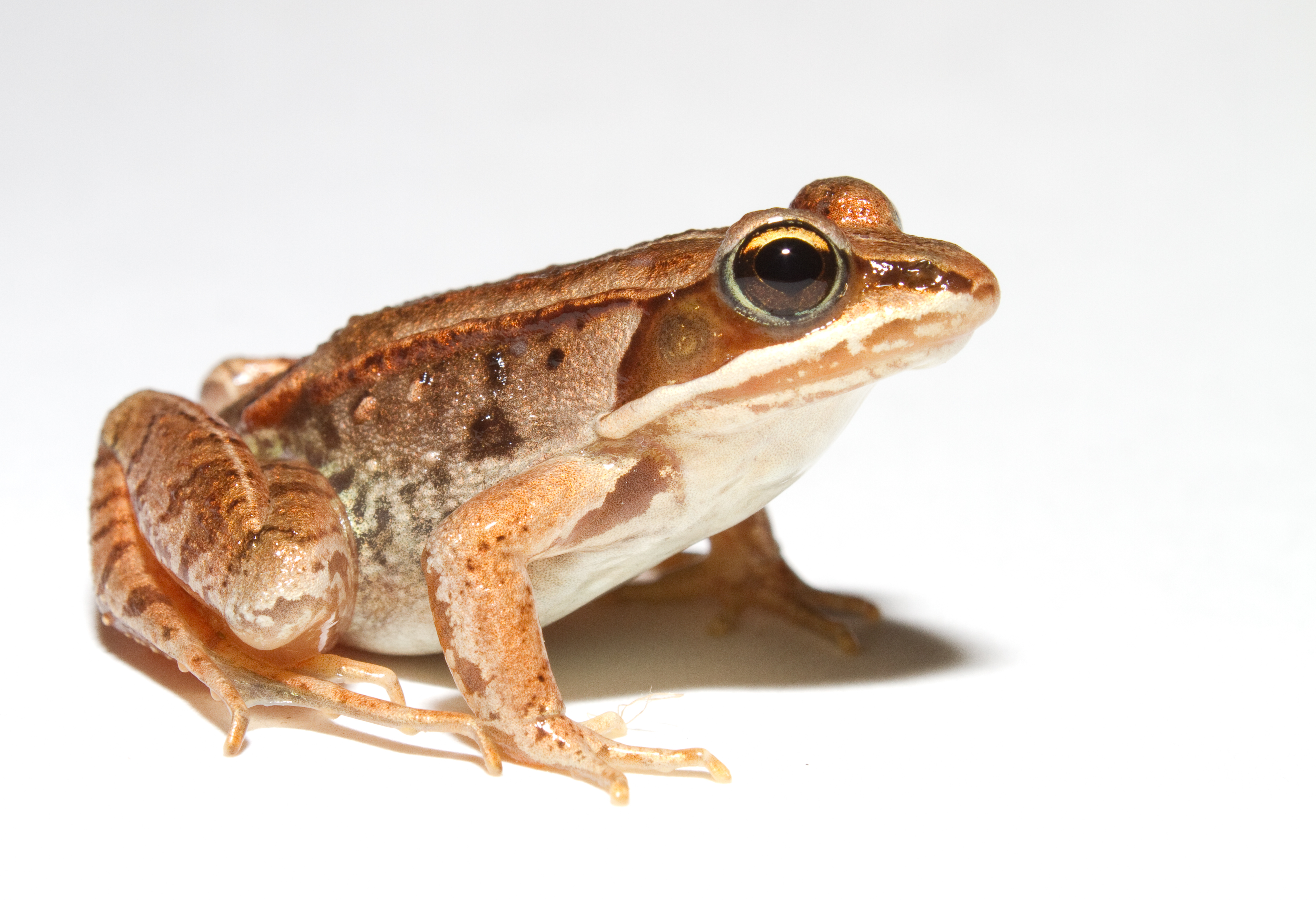
Wood frogs take the exact opposite route for their winter survival. They let themselves freeze solid while remaining at the surface underneath the leaf litter. It sounds crazy, but it really works and it allows them to overwinter close to their breeding sites and thaw at the same time the ephemeral wetlands and vernal pools fill with snowmelt.
Most frogs follow the traditional approach. Most species of frogs undergo brumation, which is a period of slowed biological processes in response to cold weather and is different from the full dormancy period of hibernation. They settle at the bottom of water bodies and remain active, despite being considerably slowed down to conserve energy.
This frog, found from southern Ohio up to the Arctic Circle, puzzles researchers with its ability to literally “freeze and thaw” along with normal winter-spring weather patterns. To survive winter’s freezing temperatures, the frog doesn’t fight the temperatures; it just freezes from the outside-in. The wood frog essentially becomes a natural frogsicle, and this extreme strategy gives it a surprising competitive advantage come spring.
The Body’s Natural Antifreeze Factory
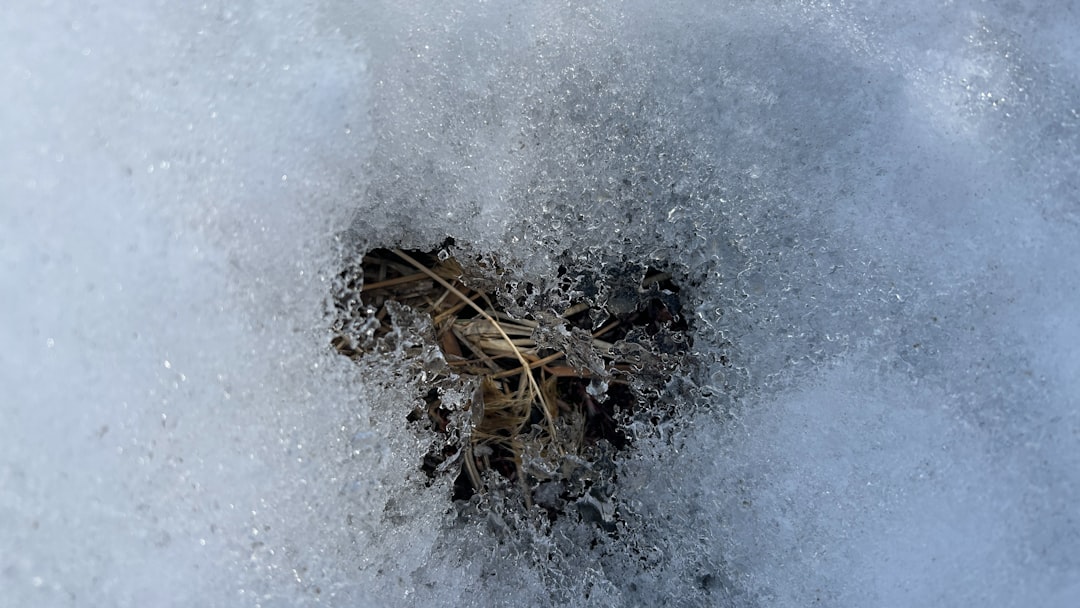
It’s all about glucose. But most people don’t know that glucose is an incredible cryoprotectant, a substance that protects tissues like skin and organs from the damages of freezing. A unique biological process allows the wood frog to freeze without damage to its body systems. As external temperatures start to dip below the freezing point, the frog’s liver produces significant amounts of glucose that flush through the bloodstream and permeate every cell.
Within hours from initiation of freezing, the glucose concentration in the core organs rises by about 100 folds. Think about that for a moment. These frogs can handle sugar levels that would kill a human instantly. While humans aren’t able to withstand blood glucose levels over twice the norm, wood frogs can tolerate blood glucose levels up to 100 times their normal average.
The glucose doesn’t just randomly appear. Cryoprotectant is chiefly derived from glycogen that accumulates in liver, representing up to 20% of organ mass, during late summer and autumn. Triggered by ice nucleation, its synthesis and export to other tissues proceeds rapidly, with concentrations in blood and core organs ultimately reaching 100–250 mmol l−1. The frog literally builds up its antifreeze reserves throughout the warmer months, preparing for its winter transformation.
How Ice Forms Without Killing
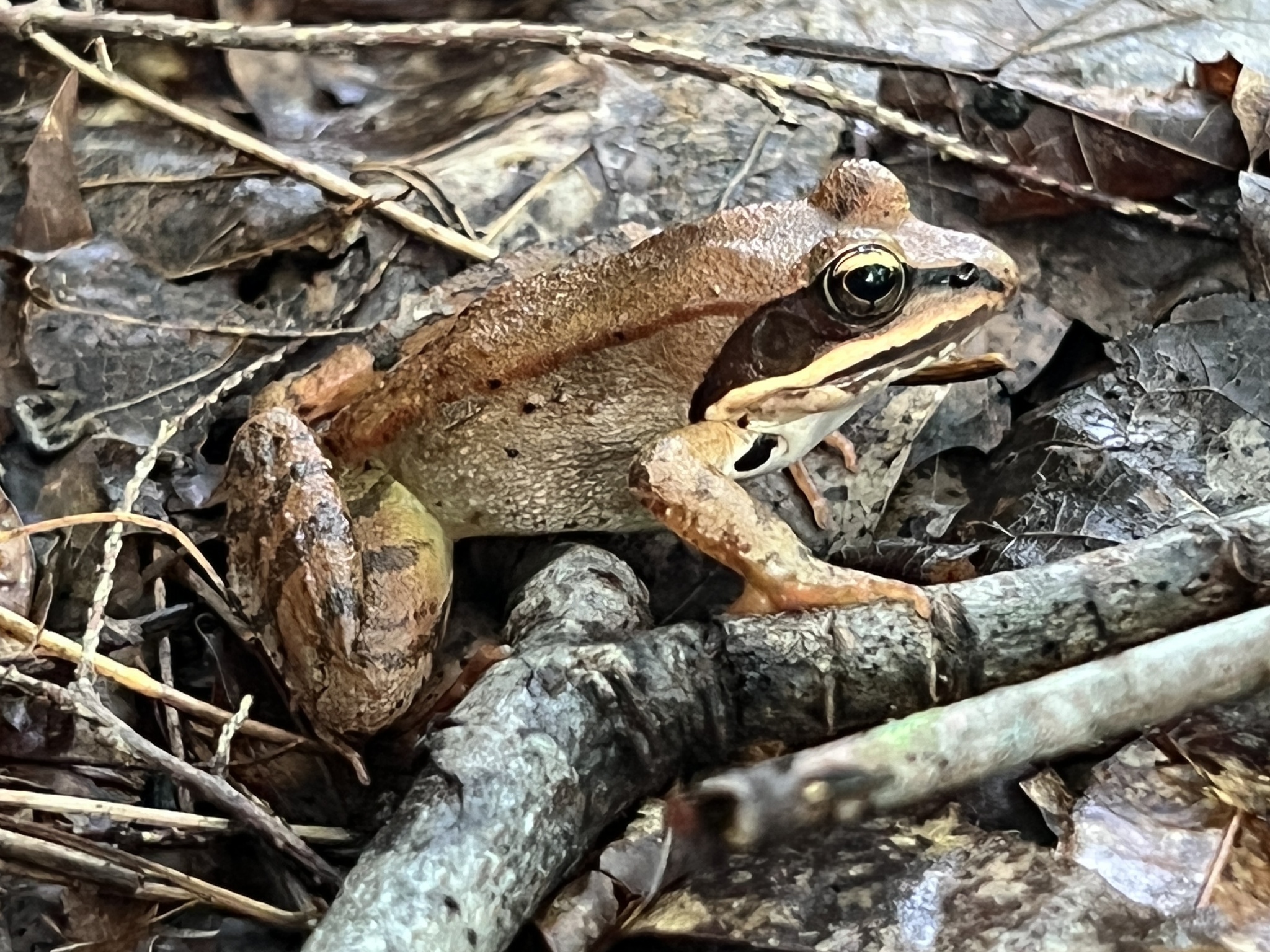
The wood frog freezes from the outside in via ice nucleation, in which ice crystals on the frog’s skin trigger a cascade of ice growth into extracellular spaces while intracellular spaces remain fluid. This process sounds terrifying, yet it’s precisely controlled. First, the frog senses the temperature drop and starts shutting down its normal metabolic functions. Then, ice begins to form in the spaces between cells rather than inside. This extracellular ice formation is less harmful.
The formation of ice pulls water out of cells (think of freeze-dried food), and when living cells dry out they eventually die. Glucose helps retain water inside the cell wall, preventing cellular drying and damage even as ice begins to fill the frog’s abdominal cavity and surround its internal organs.
The key is keeping ice crystals out of the cells themselves. In most creatures, prolonged exposure to subzero temperatures causes cells to shrink while ice forms in the tissue. The formation of ice sucks the water out of the cells, killing them. But with Alaskan wood frogs, the cryoprotectants help the cells resist this shrinkage.
Life in Suspended Animation

The frog’s heart stops beating, and breathing ceases, but the brain remains viable in this frozen state. When temperatures rise, the frog naturally thaws and reactivates its body systems. During this frozen state, the frog exists in what scientists call metabolic depression. Wood frogs in natural hibernation remain frozen for 193 +/- 11 consecutive days and reached an average (October–May) temperature of −6.3 °C (20.7 °F) and an average minimum temperature of −14.6 ± 2.8 °C (5.7 ± 5.0 °F).
Wood frogs have been recorded staying frozen for as long as eight months. As temperatures rise in the spring, the frog thaws, starting with its heart and brain – within 10 hours, it is back to normal function. Imagine being essentially dead for more than half a year, then waking up like nothing happened.
The thawing process follows a specific pattern. Defrosting rate is proportional to the glucose concentrations in the frog’s tissues, as high sugar content lowers the melting point of intracellular fluids. Internal organs receive the most glucose, meaning that the frog thaws from the inside out. As cardiac activity is restored and blood is pumped throughout the body, organs warm up and tissues revert from anaerobic to aerobic respiration in the creation of energy for metabolic function.
Extreme Cold Tolerance Champions
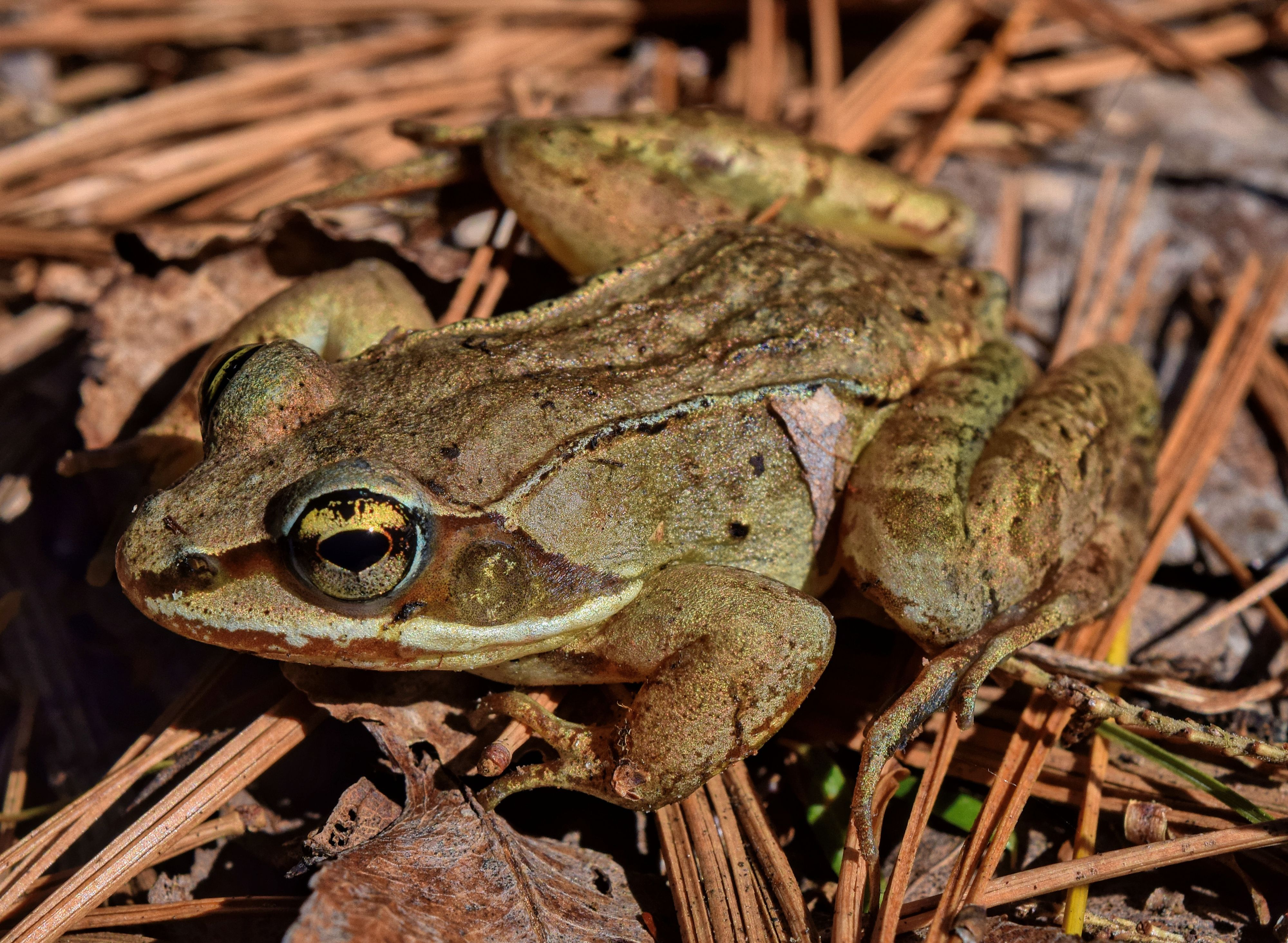
Frogs found in southern Canada and the American midwest can tolerate freezing temperatures of −3 to −6 °C (27 to 21 °F). However, wood frogs in Interior Alaska exhibit even greater tolerance, with some of their body water freezing while still surviving. These Alaskan wood frogs have pushed freeze tolerance to extraordinary limits.
Our results demonstrate that Alaskan wood frogs can survive being frozen for up to 7 months with minimum temperatures below -18°C [-0.4°F]. For as long as seven months, up to 60 percent of their bodies freeze solid. They stop breathing. The northern populations have evolved enhanced abilities compared to their southern relatives.
Studies on northern subpopulations found that Alaskan wood frogs had a larger liver glycogen reserve and greater urea production compared to those in more temperate zones of its range. These conspecifics also showed higher glycogen phosphorylase enzymatic activity, which facilitates their adaptation to freezing. Evolution has fine-tuned these frogs for increasingly harsh conditions as you move north.
The Multiple Freeze-Thaw Advantage
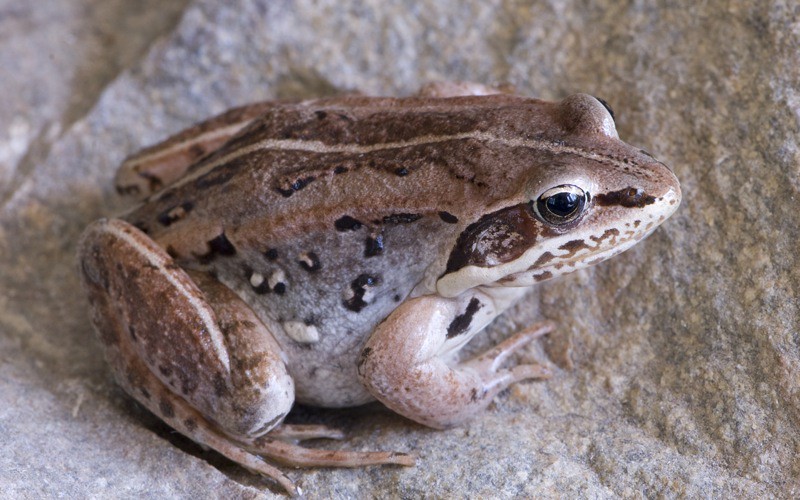
Under natural conditions in Alaska, however, wood frogs accumulate maximal tissue glucose concentrations while cooling at much faster rates, -0.35° to -1.6°C h(-1), and in addition undergo multiple successive freeze-thaw cycles before remaining frozen for the winter. This repeated cycling isn’t just random weather variation. It actually helps the frogs build up their cryoprotectant reserves.
Over successive freezing and thawing events, glucose concentrations increased stepwise in all measured tissues. Short thawing periods did not result in a statistically significant decline of glucose concentrations. Wood frogs that experienced three freeze-thaw events had fresh weight glucose concentrations that approached values found in tissues of wood frogs frozen in natural conditions.
Barnes and Larson, who recently presented the findings at the 2014 Society for Integrative and Comparative Biology conference in Austin, think that by alternately freezing and thawing, the creatures build up high concentrations of glucose – as much as 10 times the normal amount. The sugar solutes acts as “cryoprotectants,” protecting the hoppers while they turn to ice by lowering the freezing temperatures of tissues and allowing cells to survive. Think of it like conditioning your body for extreme sports, except the sport is literally freezing solid.
Revolutionary Medical Applications

As of March 2024, there are more than 103,000 people in the U.S. on the organ transplant waiting list, but just over 46,000 organ transplants took place in 2023. This discrepancy is due in part to the small window of viability for organs. Currently, whole organs can be transported through hypothermic bio preservation without causing damage to the tissue or cells, but the organs typically last for hours instead of days or weeks. If the shelf life of organs can be extended, then more organ transplants can occur.
With current technologies, transplanted organs must be kept under cold storage, and not for long. A human heart, for example, can only be preserved for four to five hours outside the body. This makes it challenging to transport organs long distances, and in some cases, compels doctors to settle for less-than-ideal tissue matches between donors and recipients. Tragically, many organs that could have potentially been used for transplantation are discarded.
Recapitulating these pro-survival strategies in transplantable human cells and organs could improve viability post-thaw leading to better post-transplant outcomes, in addition to providing more time for adequate distribution of these transplantable materials across larger geographical areas. Indeed, several laboratories are beginning to mimic the pro-survival responses observed in wood frogs to preservation of human cells, tissues and organs and, to date, a few trials have been successful in extending preservation time prior to transplantation. The wood frog’s freeze tolerance could be a game-changer for millions of people waiting for life-saving transplants.
From Frog Research to Human Medicine
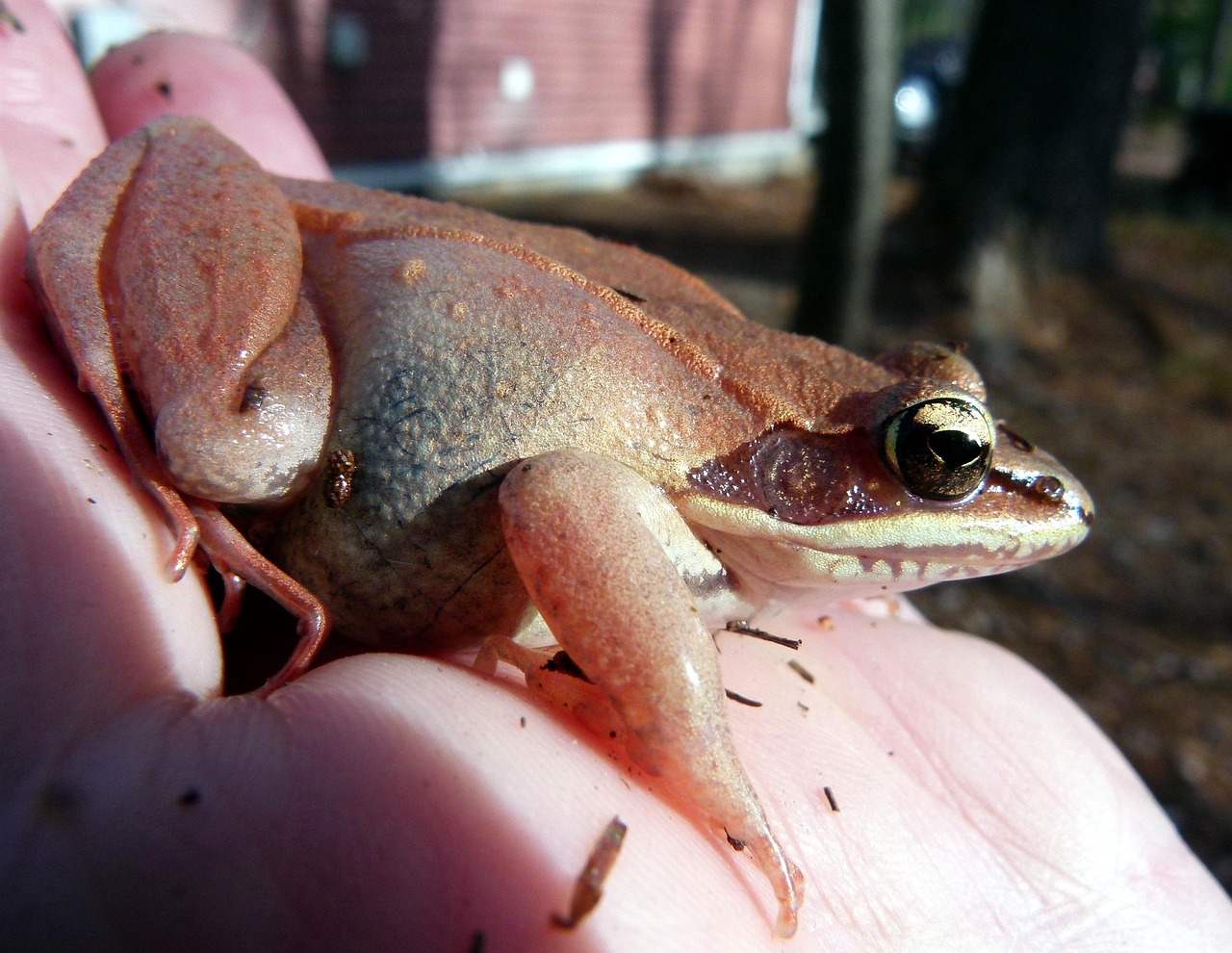
A recent experiment conducted at the University of California used a similar process. Professor Boris Rubinsky removed a rat’s liver and filled it with glycerol, a similar sugar to glucose. He then froze the liver, thawed it, and transplanted it into another rat, proving the hypothesis a success. Scientists are making real progress translating frog biology into practical medical applications.
Other adaptations, such as the decrease in metabolism and reduced production of reactive oxygen, are possible through already developed drug treatments, though are likely to vary in applicability depending on the tissue being treated. Such treatment has already shown increased viability of thawed tissue in several mammalian cell lineages, such as mice, owl-monkey, and human tissue samples.
Yet challenges remain. While glucose may work in frogs to lower the freezing point of water inside the cell, its usage can result in proteins called Advanced Glycation End-products (AGE’s), which have been associated with diabetes, Alzheimer’s disease, chronic kidney disease, and other degenerative diseases. Medical researchers are also still stumped by a very important step in the reanimation process: they have yet to determine how the wood frog triggers its heart to restart after being frozen.
The research has expanded beyond organ preservation. Also, by looking at the ways in which the wood frog tolerates such high blood glucose levels could be beneficial in finding ways to help individuals with diabetes manage their blood sugars. These amphibians might hold keys to treating multiple human health conditions.
The Future of Cryopreservation
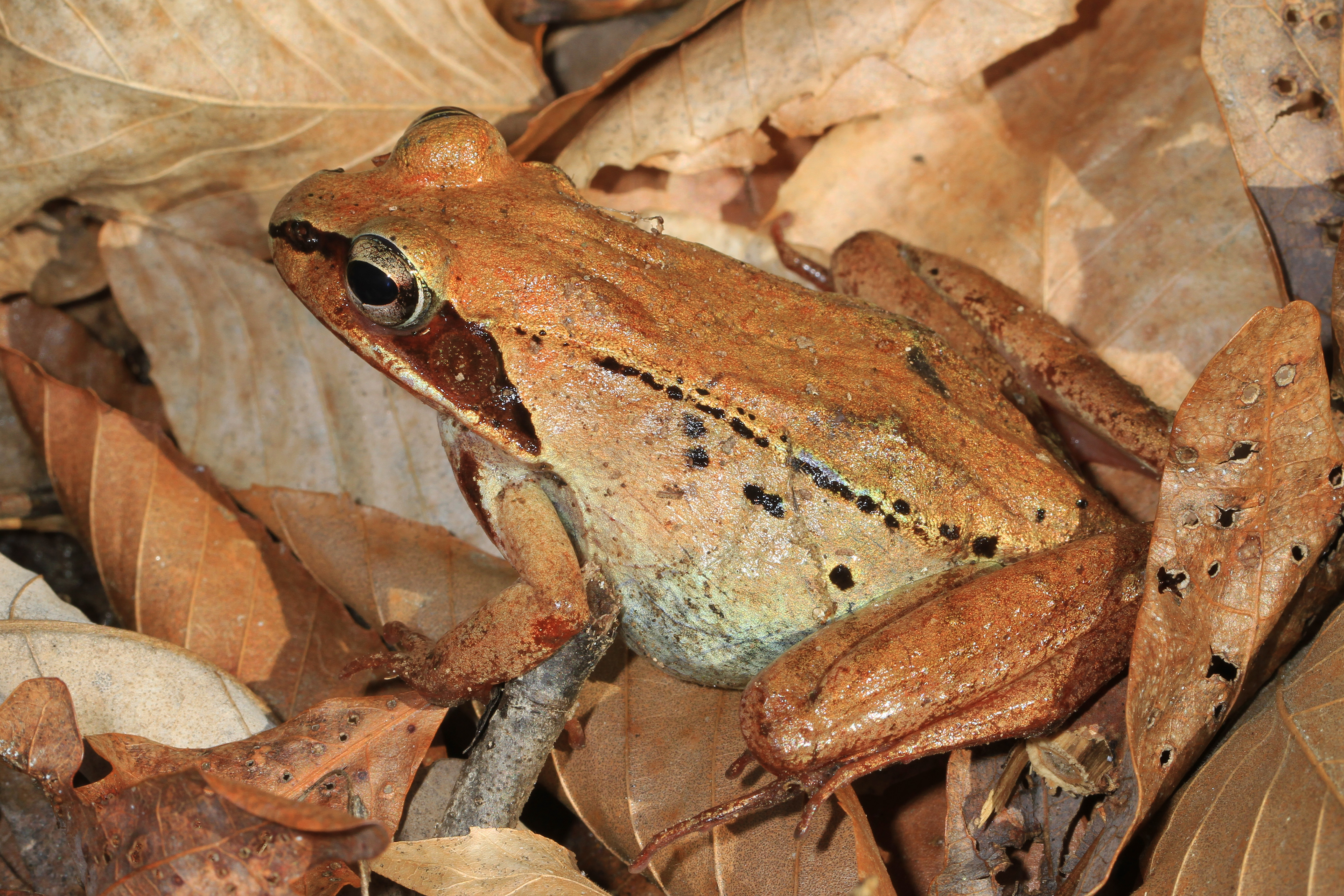
Deep freezing could potentially keep organs viable for months, maybe even years. Unfortunately, studies on the vitrification of bulk organs have faced difficulties with preventing crystallization during rewarming. So, finding ways to work with rather than avoid crystallization may be a better approach to the deep freezing of organs. That’s where the wood frog comes in.
While one branch of research focuses on developing less-toxic chemicals, another looks to nature for inspiration. The second category is vitrification – freezing organs to cryogenic temperatures of about –320°F, which could theoretically allow them to be banked for years. The wood frog’s approach might offer a safer alternative to current cryogenic methods.
In addition to whole organ banking, the field of regenerative medicine is another area affected by lack of reliable long-term cryopreservation methods. As such, it is crucial to generate and optimize new subzero cryopreservation methods that would not only enhance the viability of donated organs and allow for longer storage time but would also improve their long-term function post-transplantation. Once established, these protocols could also be used in regenerative medicine to cryopreserve cells, engineered tissues and organoids to allow their global distribution in a safe and economically feasible manner for both research and clinical uses.
The wood frog has shown us that surviving being frozen solid isn’t just possible – it’s a refined biological art form. The wood frog is a marvel of evolution and adaptation, with one of the most unique biochemical defenses in the world. What started as curiosity about how a small amphibian survives winter has opened doors to potentially revolutionary advances in medicine, from organ transplants to diabetes treatment. Sometimes the most incredible scientific breakthroughs come from the most unexpected places – like a frozen frog in an Alaskan forest.
What amazes you most about nature’s ability to solve problems that have stumped human scientists for decades? Share your thoughts in the comments below.

